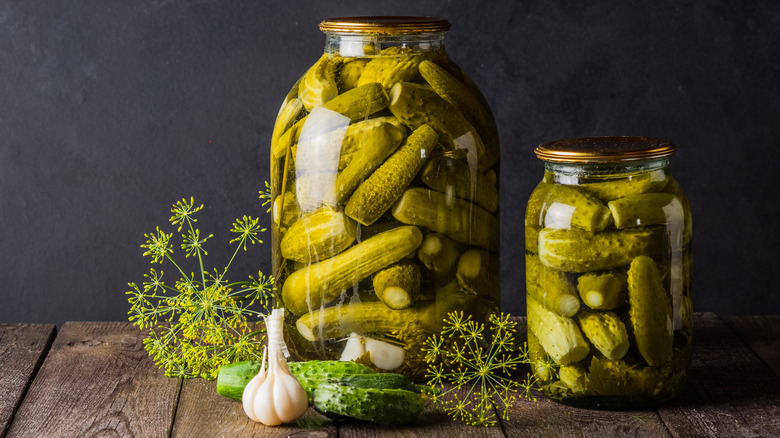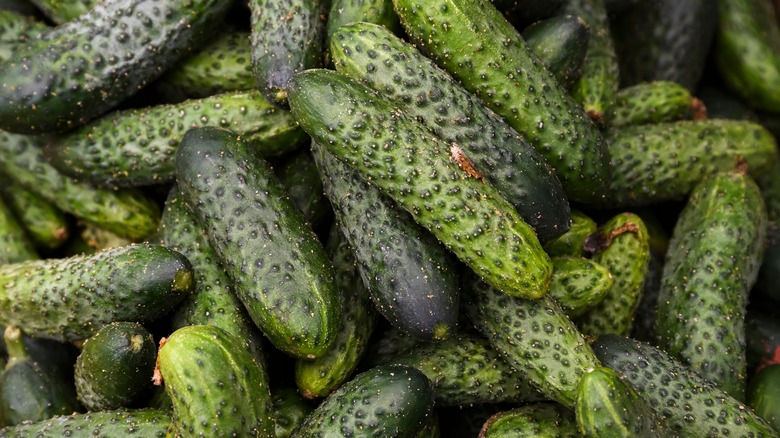The Bizarre Way People Canned Cucumbers In 1915
Pickles are one of the more divisive foods out there; crunchy, salty, sour, and wet, it seems you either love them to death or gag at even a trace of pickle juice on your burger bun. There are a few different types of pickles out there, but none stray far from the basic formula of cucumbers preserved in brine, which has been used since roughly 2030 B.C. (via PBS). The pioneers of pickle production came from India, where cucumbers are native, and their process of preserving pickles in saltwater brine proved immensely effective at preventing bacteria from growing on the vegetable.
Such methods of preservation were essential in the days before refrigerators were widely available. The need for canning supplies inspired two enterprising brothers, Frank and Edmund Ball, to start manufacturing tin cans in 1880, later expanding their business to include the glass mason jars that many people still refer to as "Ball jars" (via Society for Historical Archaeology). To promote their products, the Ball company released the Ball Blue Book of Canning and Preserving, a collection of pickled and preserved recipes, in 1915 (via Food in Jars). Nestled between its covers is one of the strangest recipes you will ever see.
The Ball Blue Book has a recipe for cucumber sweet mangoes
Cucumber sweet mangoes do not have any mango in them, and the source of the name is a mystery, but the original 1915 recipe has been preserved (no pun intended) by the University of Iowa Digital Library for any bold soul who wishes to try them. The instructions begin rather typically, directing the reader to soak cucumbers in brine for 12 days, but then the Balls really started to think outside the jar. After the first pickling stage is complete, the reader is told to split the cucumbers lengthwise, remove their seeds, and briefly boil them with alum (potassium aluminum sulfate), a common addition to pickles that, according to McCormick, helps the vegetables stay crisp.
Following this stage, the Ball Blue Book instructs cooks to stuff the pickled cucumber halves with raisins and cubes of lemon, including the zest. Then, simply tie the two halves of the cucumber together with string to create a bizarre Frankenstein's pickle, and dunk that in a jar with cinnamon, cloves, vinegar, and sugar. After nine days of soaking, these monstrous creations will be ready for unleashing on the world. Personally, we'll stick with good old dill pickles, but hey, to each their own.

